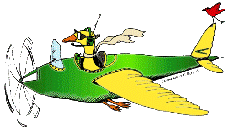Bird Strike Committee Proceedings
Date of this Version
October 2002
Document Type
Article
Abstract
The use of Geographic Information Systems (GIS) for displaying spatial data is a well established technique widely used by many professions, especially natural resources. Environmental and engineering departments at many civil and military airports also use GIS to aid in planning new construction and future development. These same techniques can be applied at airports to create maps that visually portray the occurrence and location of wildlife hazardous to aircraft. At Seymour Johnson Air Force Base in North Carolina, USDA Wildlife Services uses this technology to analyze and display wildlife activity on grid maps. Wildlife observations are maintained in a database that is linked to the facility GIS. Spatial and temporal distribution of species may be selected, and this information can be overlaid on maps that depict possible wildlife attractants (e.g., rivers or ponds). Resulting maps aid in wildlife hazard management and are easily interpreted by airport operations personnel. Archived material also can be examined to detect long-term trends that may be hazardous. The use of GIS technology to create these maps is an efficient and concise process that provides information to a wide audience concerning wildlife hazards in the fast paced airport environment.


